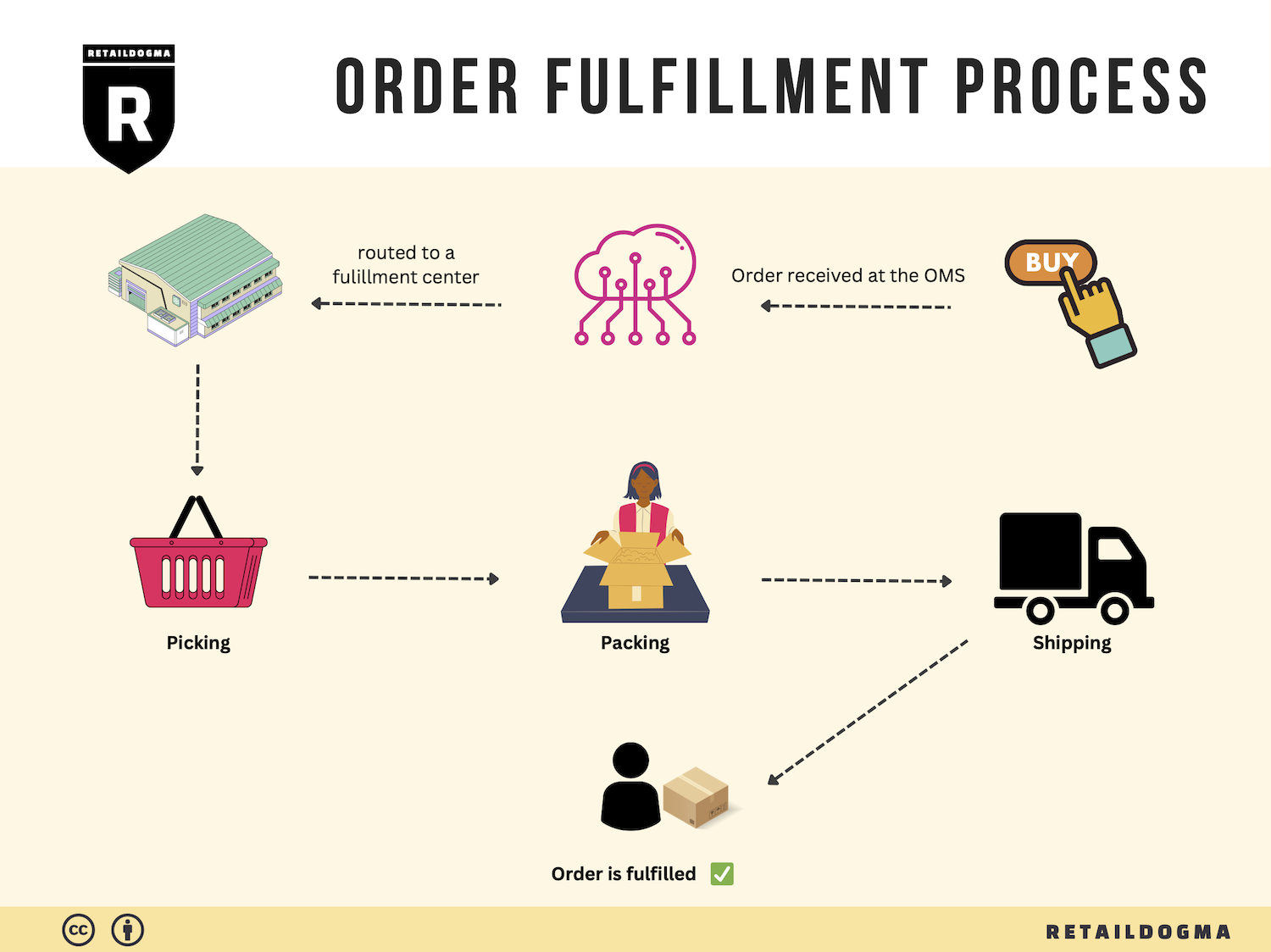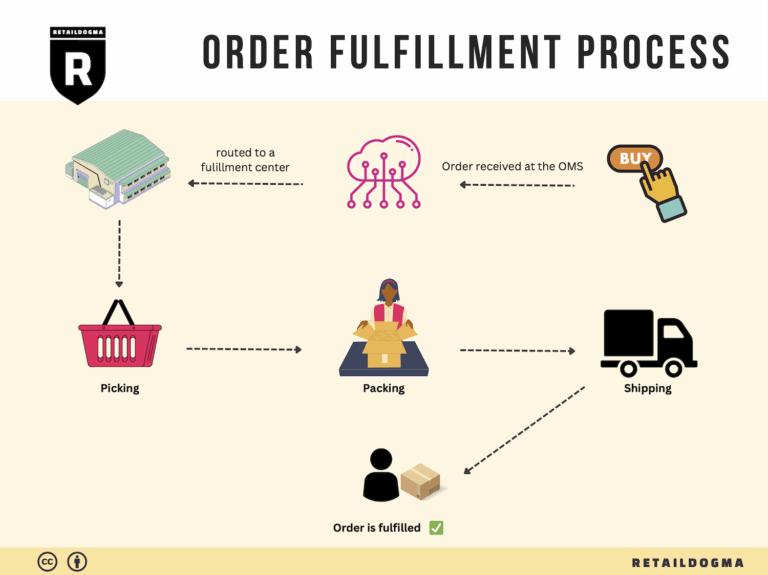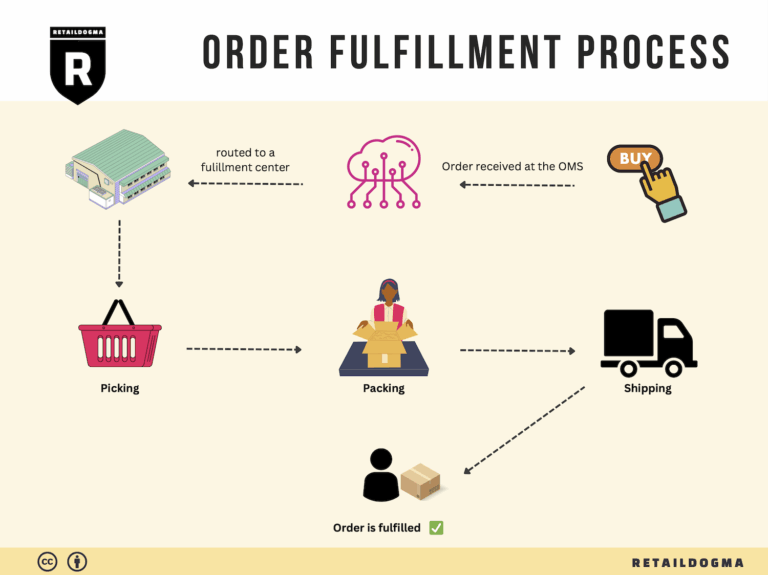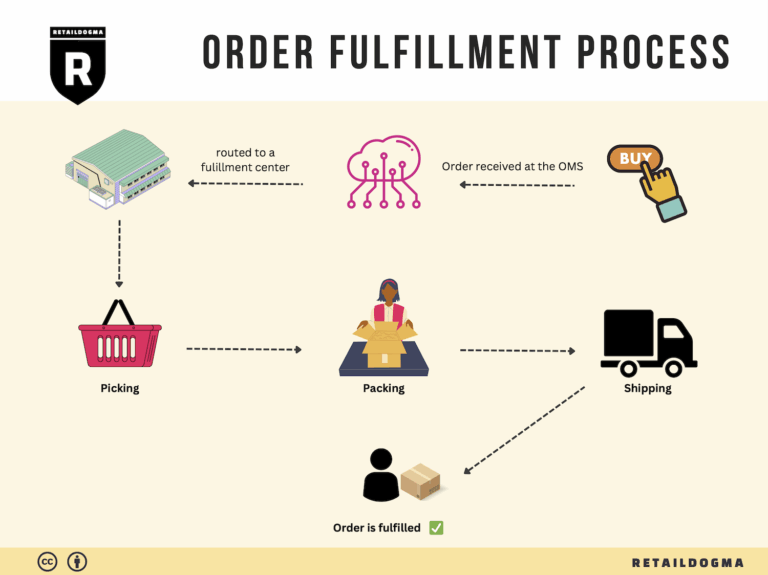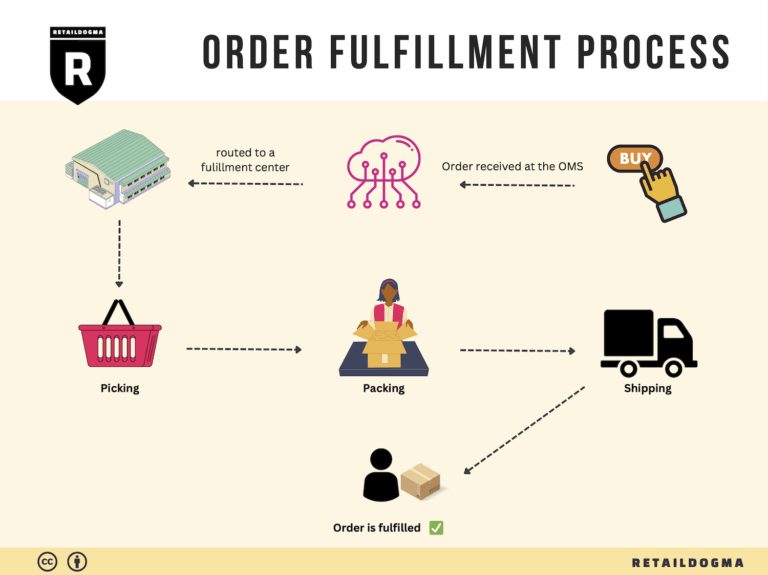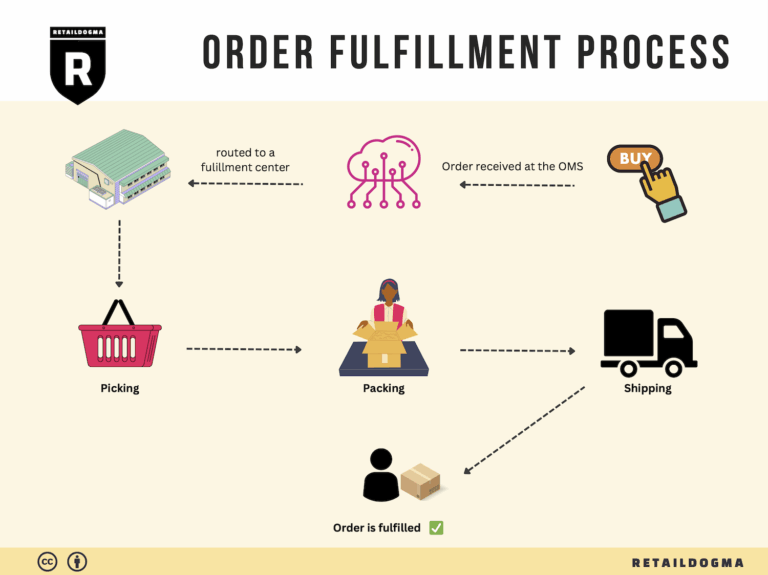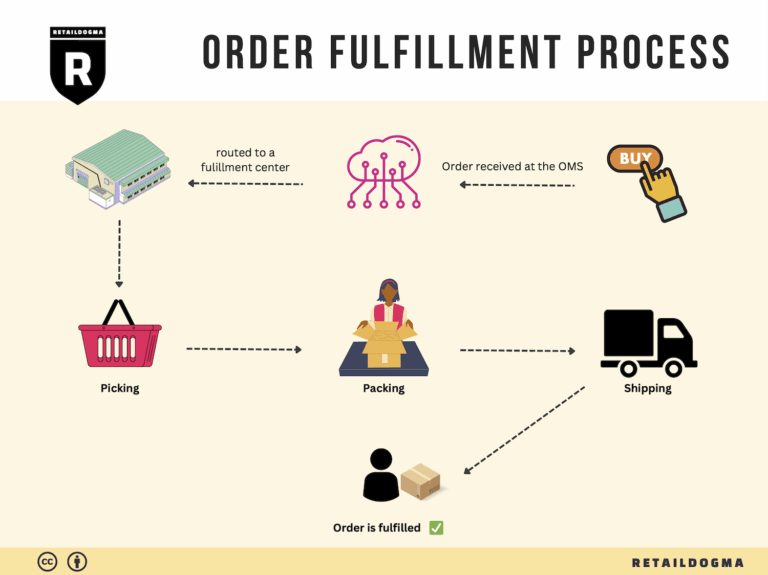Ecommerce Fulfillment Services: The Ultimate Guide (2025)
What is E-commerce Fulfillment? An Introduction for Growing Businesses
Understanding E-commerce Fulfillment: A Crucial Step for Growing Businesses
As an e-commerce business owner, the excitement of scaling your sales can quickly turn into a daunting challenge when it comes to packing and shipping orders. The complexity of logistics can overwhelm even the most passionate entrepreneurs, leading to delays, errors, and ultimately, dissatisfied customers. This is where e-commerce fulfillment comes into play.
E-commerce fulfillment is simply the process of getting a product from your warehouse or fulfillment center to your customer’s doorstep. It encompasses everything from inventory management and order processing to packing and shipping. As your business grows, understanding and optimizing your fulfillment strategy becomes vital to maintaining customer satisfaction and operational efficiency.
In this guide, we will explore the various fulfillment models available to online businesses. You’ll learn about Third-Party Logistics (3PL) providers, Fulfillment by Amazon (FBA), and in-house fulfillment options, each with its unique advantages and challenges. By understanding these models, you can make informed decisions that align with your business goals.
We will delve into the core services that fulfillment centers offer, including inventory storage, order picking and packing, shipping, and returns management. Each of these components plays a critical role in ensuring your customers receive their orders promptly and accurately. Additionally, we will discuss the importance of technology in modern fulfillment processes, highlighting how automation and software can streamline operations.
Choosing the right fulfillment partner is crucial for your business’s success. We’ll provide practical tips on evaluating potential partners, including assessing their reliability, scalability, and customer service. Understanding the nuances of pricing in fulfillment will also be covered, ensuring you can navigate costs effectively while maximizing your profit margins.
Ultimately, this guide aims to empower you to make smart, strategic decisions about your logistics. By optimizing your e-commerce fulfillment process, you can focus on what you do best—growing your business and delighting your customers. Whether you’re just starting out or looking to enhance your existing operations, the insights provided here will serve as a valuable resource for your journey in the e-commerce landscape.
What You’ll Learn In This Guide
- What is E-commerce Fulfillment? An Introduction for Growing Businesses
- The Order Fulfillment Process: From ‘Buy’ Button to Customer’s Door
- Comparing Fulfillment Models: In-House vs. 3PL vs. Dropshipping
- A Deep Dive into Amazon FBA: Pros, Cons, and Who It’s For
- Core Services Offered by Fulfillment Centers
- How to Choose a Fulfillment Partner: A 6-Point Checklist
- Understanding Fulfillment Pricing: A Breakdown of Common Fees
- Frequently Asked Questions (FAQs) about Fulfillment
- Conclusion: Is Outsourcing Fulfillment the Right Move for Your Business?
- Important Disclaimer
The Order Fulfillment Process: From ‘Buy’ Button to Customer’s Door
1. Receiving Inventory
The order fulfillment process begins with receiving inventory, a crucial step that sets the foundation for efficient operations. When products arrive at a fulfillment center, they are checked against purchase orders to ensure accuracy. This step involves verifying quantities, inspecting for damages, and confirming that the correct items have been delivered.
Key terms associated with this process include SKU (Stock Keeping Unit), which is a unique identifier for each product. Using SKUs allows for precise tracking and management of inventory levels. Proper inventory receiving is vital because it ensures that the stock is accurately recorded in the system, preventing issues such as stockouts or overstocking. Efficient receiving can significantly reduce lead times and improve overall order accuracy, leading to enhanced customer satisfaction.
2. Warehouse Storage
Once the inventory is received and verified, the next step is warehouse storage. This involves organizing the products within the fulfillment center in a manner that optimizes space and accessibility. Items are typically stored in designated locations based on various factors such as size, weight, and demand frequency.
A key concept in this stage is ABC analysis, a method used to categorize inventory based on importance. A-items are high-value products that sell quickly, while C-items are lower in value and turnover. Proper warehouse storage is essential because it facilitates quicker access to products during the picking process, thus reducing the time it takes to fulfill orders. An organized storage system also minimizes the risk of errors and enhances operational efficiency.
3. Order Picking
Order picking is the process where items are retrieved from their storage locations to fulfill customer orders. This step is critical as it directly impacts order accuracy and processing speed. Fulfillment centers often utilize pick lists, which are generated based on customer orders and guide workers to the exact location of each item.
There are various picking methods, including single order picking, batch picking, and zone picking, each with its advantages depending on the volume and nature of orders. Efficient order picking ensures that customers receive the correct products in a timely manner, which is essential for maintaining customer satisfaction and loyalty. Additionally, the speed and accuracy of this process can significantly influence overall fulfillment costs.
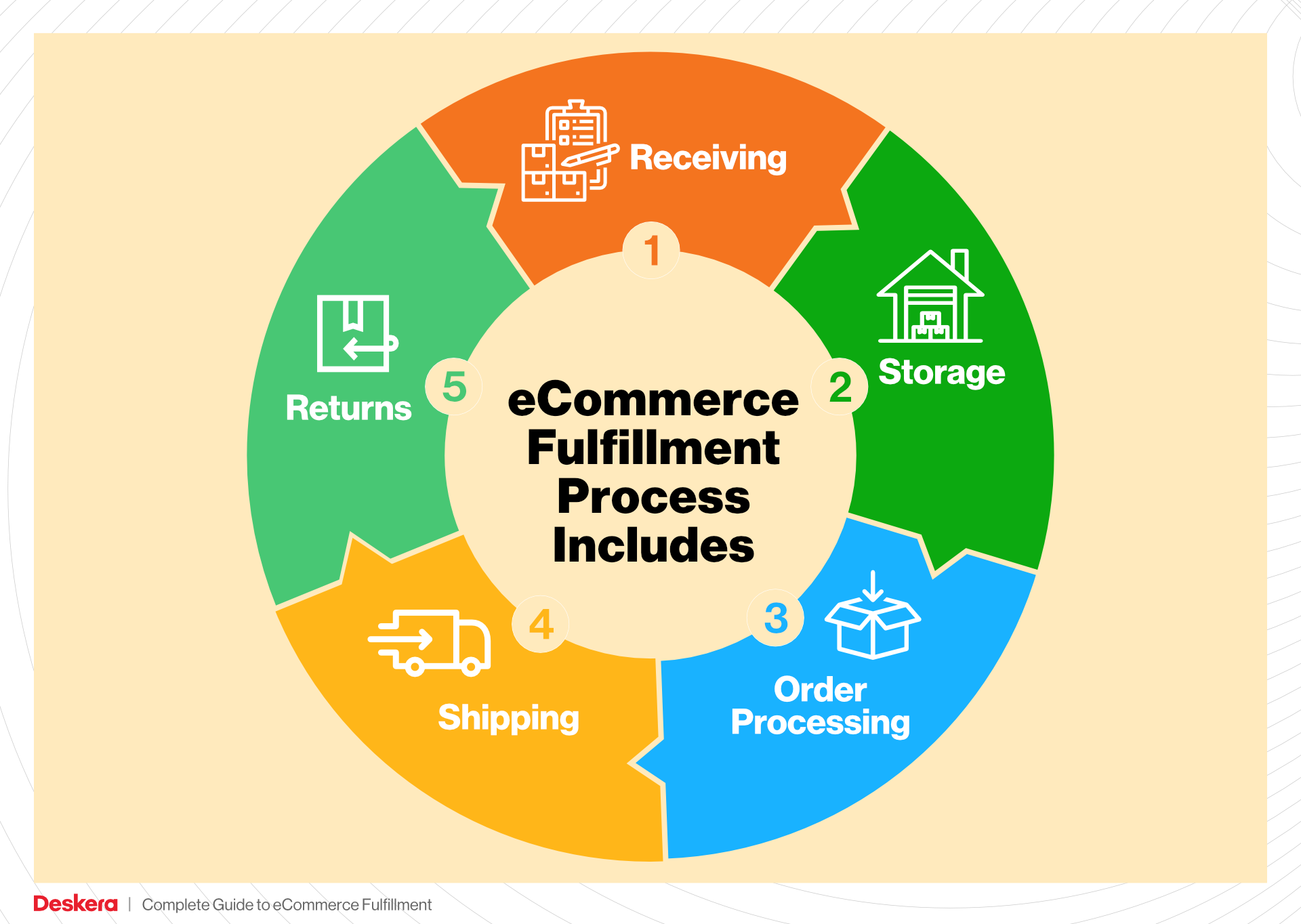
4. Order Packing
After items have been picked, the next step is order packing. This process involves securely packaging the items for shipment to ensure they arrive at the customer’s door in perfect condition. Proper packing includes selecting the appropriate box size, using protective materials (like bubble wrap or packing peanuts), and labeling the package accurately.
A critical term in this phase is packing slips, which are documents included in the shipment that detail the contents of the package. Effective order packing is vital as it not only protects the items during transit but also enhances the unboxing experience for customers. A well-packed order can lead to positive reviews and repeat business, making it a key component of the fulfillment process.
5. Shipping & Delivery
The final step in the order fulfillment process is shipping and delivery. Once the order is packed, it is handed over to shipping carriers for transportation to the customer. This stage involves selecting the best shipping method based on factors such as cost, speed, and destination.
A significant concept in this area is last-mile delivery, which refers to the final step of the delivery process where the package reaches the customer’s address. Efficient shipping and delivery are crucial for meeting customer expectations regarding delivery times and costs. Businesses must track shipments and communicate with customers about their order status to enhance the overall experience. Effective management of this stage can lead to increased customer satisfaction and loyalty, ultimately driving repeat sales.
In conclusion, understanding and optimizing each step of the order fulfillment process is essential for e-commerce businesses looking to scale. From receiving inventory to ensuring timely delivery, each stage plays a critical role in delivering a seamless customer experience. By focusing on efficiency and accuracy at every step, businesses can enhance their operational effectiveness and ultimately drive growth.
Comparing Fulfillment Models: In-House vs. 3PL vs. Dropshipping
Fulfillment Model Comparison
| Model | Who Handles Inventory | Best For (Business Stage) | Key Advantage | Key Disadvantage |
|---|---|---|---|---|
| In-House Fulfillment | Business (own warehouse) | Established businesses | Full control over inventory and processes | High overhead costs and complexity |
| Third-Party Logistics (3PL) | 3PL Provider | Growing businesses | Scalability and reduced operational burden | Less control over inventory and processes |
| Dropshipping | Supplier | Startups and small businesses | Low upfront investment and risk | Lower profit margins and reliance on suppliers |
In-House Fulfillment
In-house fulfillment involves managing all aspects of inventory and logistics within your own facilities. This model is ideal for established businesses that have the resources and demand to justify the investment in warehousing, staffing, and technology. The primary advantage of in-house fulfillment is the level of control it offers. Businesses can tailor their processes to meet specific operational needs, ensuring that inventory is managed precisely and that order fulfillment can be optimized for speed and accuracy. Moreover, having direct oversight of inventory allows for immediate adjustments based on changing demand or product performance. However, this model comes with significant disadvantages. Operating a warehouse requires substantial capital investment and ongoing operational costs such as rent, utilities, staffing, and technology. Additionally, managing logistics can be complex, requiring expertise in supply chain management, which can be a steep learning curve for businesses without prior experience.
Third-Party Logistics (3PL)
Third-party logistics (3PL) providers handle warehousing, inventory management, and shipping on behalf of businesses. This model is well-suited for growing businesses that want to focus on their core competencies, such as product development and marketing, while outsourcing the logistics aspect. The key advantage of utilizing a 3PL is scalability; businesses can easily adjust their inventory levels and distribution strategies without the burden of managing their own warehouse. This can lead to reduced operational costs, as 3PLs often have established networks that can provide better shipping rates and faster delivery options. However, the downside is that businesses relinquish some control over their inventory and fulfillment processes. This lack of control can lead to challenges in maintaining quality standards and can complicate communication during peak times or unexpected issues. Businesses must also ensure they choose a reputable 3PL partner to mitigate risks associated with service quality and reliability.
Dropshipping
Dropshipping is a fulfillment model where businesses sell products without holding inventory themselves. Instead, when a customer makes a purchase, the business orders the product from a supplier, who then ships it directly to the customer. This model is particularly attractive for startups and small businesses due to its low upfront investment and minimal risk. With dropshipping, there’s no need to manage inventory or warehouse space, allowing entrepreneurs to focus on marketing and customer engagement. However, the key disadvantage of dropshipping lies in the lower profit margins. Since the business relies on suppliers for inventory and shipping, it often faces higher costs per unit and less pricing flexibility. Additionally, the reliance on third-party suppliers can lead to issues such as stock shortages, shipping delays, and quality control problems, which can negatively impact customer satisfaction. Businesses using this model must carefully vet suppliers and maintain clear communication to ensure a positive customer experience.
Conclusion
Choosing the right fulfillment model is critical for e-commerce businesses looking to scale their operations effectively. In-house fulfillment offers control but demands significant resources, while 3PL provides a scalable solution with less operational burden. Dropshipping allows for a low-risk entry into the market but comes with challenges in profit margins and supplier reliability. Business owners must assess their current stage, operational capabilities, and long-term goals to select the fulfillment model that aligns best with their strategic vision.
A Deep Dive into Amazon FBA: Pros, Cons, and Who It’s For
Understanding Fulfillment by Amazon (FBA)
Fulfillment by Amazon (FBA) is a service offered by Amazon that allows e-commerce businesses to store their products in Amazon’s fulfillment centers. Once a seller opts for FBA, Amazon takes over the logistics involved in storage, packing, and shipping of products, as well as handling customer service and returns. This service is especially attractive for businesses looking to scale quickly and efficiently without the need for extensive warehousing or logistics infrastructure.
How FBA Works
-
Setting Up FBA: Sellers start by creating an Amazon Seller account and choosing to enroll in FBA. They then prepare their products according to Amazon’s guidelines, which may include labeling and packaging requirements.
-
Shipping Products: After preparation, sellers ship their products to Amazon’s designated fulfillment centers. Amazon has multiple warehouses across the globe, allowing for efficient distribution.
-
Storage: Once the products arrive at the fulfillment center, they are stored until an order is placed. Amazon provides sellers with a dashboard to monitor inventory levels.
-
Order Fulfillment: When a customer places an order for a seller’s product, Amazon picks, packs, and ships the item directly to the customer. This process is seamless and allows for quick delivery times, often including same-day or two-day shipping for Prime members.
-
Customer Service: Amazon also manages customer service and returns for FBA products, allowing sellers to focus on other aspects of their business.
Pros of FBA
-
Prime Eligibility: One of the most significant advantages of using FBA is that products become eligible for Amazon Prime. This can significantly increase sales as Prime members prefer products that offer free and fast shipping.
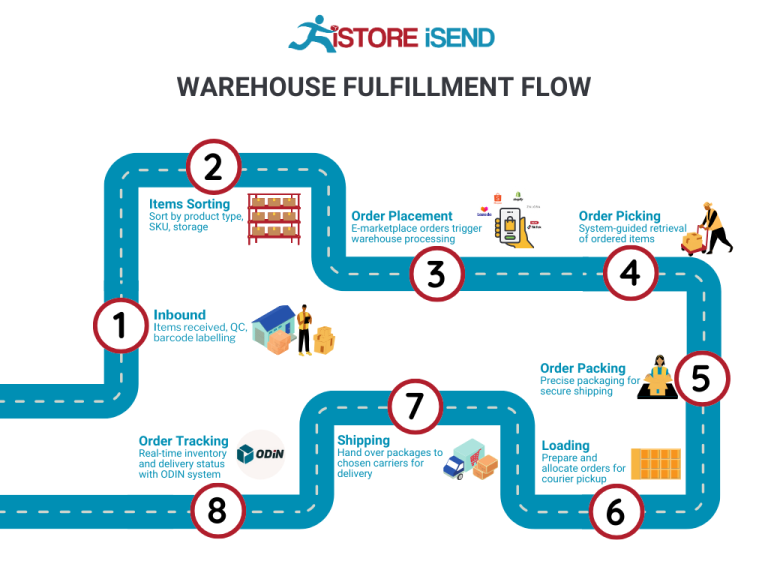
-
Customer Trust: Products fulfilled by Amazon benefit from the trust associated with the Amazon brand. Customers are more likely to purchase items that are backed by Amazon’s reliable fulfillment and customer service.
-
Multi-Channel Fulfillment: FBA isn’t limited to just Amazon sales. Sellers can use FBA to fulfill orders from their own websites or other sales channels, which streamlines the logistics process across multiple platforms.
-
Scalability: With FBA, businesses can scale quickly without the need for significant investments in warehousing or logistics. Amazon handles the complexities of storage and shipping, allowing sellers to focus on growth.
-
Time Savings: Automating the fulfillment process saves sellers valuable time that can be redirected towards marketing and product development.
Cons of FBA
-
High Fees: While FBA can simplify logistics, it comes with associated costs. Sellers are charged for storage and fulfillment, which can add up, especially for low-margin products. Understanding the fee structure is essential for maintaining profitability.
-
Strict Inventory Rules: Amazon has strict guidelines regarding inventory management. Sellers must comply with policies related to inventory limits, product condition, and packaging. Failure to adhere to these rules can result in penalties or loss of FBA privileges.
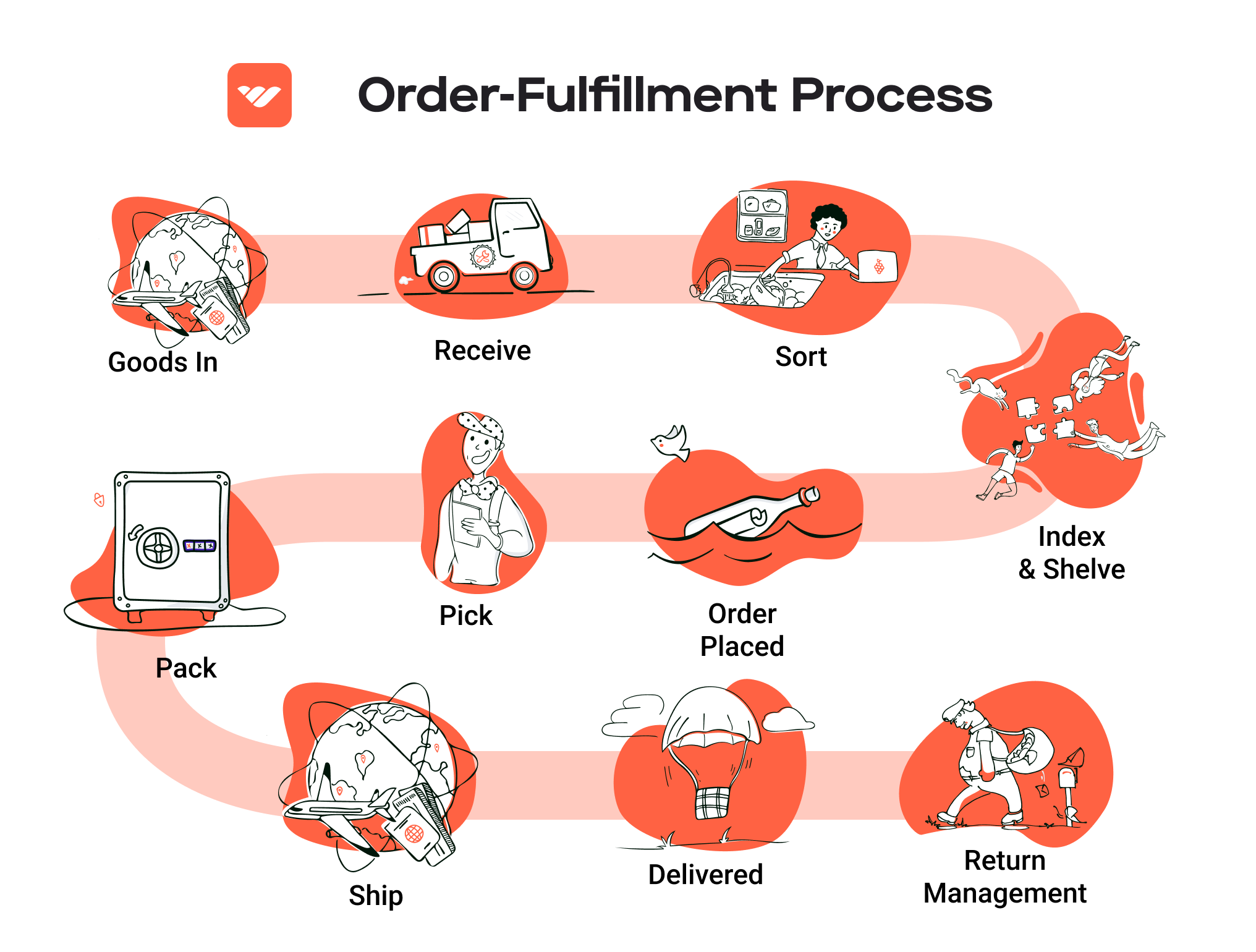
-
Commingling Risks: FBA products may be commingled with similar items from other sellers, meaning that the seller cannot guarantee the exact item being shipped to a customer is theirs. This can lead to issues with brand control and customer satisfaction if the product quality does not meet expectations.
-
Loss of Control: By outsourcing fulfillment to Amazon, sellers may lose some control over the fulfillment process, including packaging and branding. This can dilute brand identity, especially for businesses that pride themselves on unique packaging or customer experience.
-
Inventory Management Challenges: Managing inventory across multiple platforms can be complex. Sellers must carefully track stock levels to avoid running out of inventory or incurring long-term storage fees.
Who is FBA Best For?
Fulfillment by Amazon is best suited for small to medium-sized e-commerce businesses that are looking to scale their operations without the hassle of managing logistics. It is particularly beneficial for:
-
Startups: New businesses can quickly leverage Amazon’s infrastructure to reach a vast audience without needing to invest heavily in logistics.
-
Brands with High Sales Volume: Businesses that sell high volumes of products can benefit from the economies of scale that FBA offers, particularly in shipping and storage.
-
Sellers with Seasonal Products: Companies that sell seasonal items can utilize FBA to manage fluctuations in demand without committing to long-term warehousing solutions.
-
Multi-Channel Sellers: Businesses that sell across multiple platforms can simplify their operations by using FBA for fulfillment, allowing for a streamlined process across their sales channels.
In conclusion, while FBA presents several advantages that can greatly enhance an e-commerce business’s operational efficiency and customer reach, it also comes with challenges that require careful consideration. Businesses must weigh the benefits against the costs and risks to determine if FBA aligns with their long-term growth strategy.
Core Services Offered by Fulfillment Centers
Inventory Management & Warehousing
Inventory management and warehousing are fundamental services provided by fulfillment centers that play a critical role in the e-commerce supply chain. This service involves the systematic tracking of inventory levels, orders, sales, and deliveries. Fulfillment centers utilize advanced inventory management systems that automate the monitoring of stock levels, ensuring that businesses maintain optimal inventory without overstocking or stockouts.
Benefits:
1. Enhanced Efficiency: By using sophisticated technology for inventory tracking, businesses can streamline their operations, reducing the time spent on manual inventory counts and management.
2. Improved Cash Flow: Effective inventory management allows businesses to optimize their stock levels, which helps in freeing up capital that can be used elsewhere in the business.
3. Reduced Risk of Stockouts: With real-time inventory tracking, businesses can receive alerts when stock levels fall below a certain threshold, preventing missed sales opportunities due to stockouts.
4. Data-Driven Decisions: Fulfillment centers often provide analytics and reporting on inventory turnover rates and sales trends, enabling businesses to make informed purchasing decisions.
Pick and Pack Services
Pick and pack services are essential for fulfilling customer orders efficiently and accurately. This process involves selecting the correct items from the warehouse (picking) and then preparing them for shipment (packing). Fulfillment centers employ trained staff and sophisticated technologies to ensure that the right products are picked, packed securely, and shipped promptly.
Benefits:
1. Accuracy and Speed: Utilizing technology such as barcode scanners and automated picking systems reduces human error and speeds up the order fulfillment process. This means customers receive the correct items in a timely manner, enhancing customer satisfaction.
2. Scalability: As an e-commerce business grows, fulfillment centers can scale their pick and pack operations to accommodate increasing order volumes without the need for significant investments in infrastructure or staffing.
3. Customization: Many fulfillment centers offer customizable packing options, such as branded packaging or including promotional materials, allowing businesses to enhance their brand visibility and customer experience.
4. Cost Efficiency: By outsourcing pick and pack services, businesses can save on labor costs and overhead associated with maintaining an in-house fulfillment operation.
Kitting and Assembly
Kitting and assembly services provided by fulfillment centers involve the grouping of individual items into ready-to-ship sets or kits. This service is particularly beneficial for e-commerce businesses that sell products that are often bundled together, such as pet supplies or hobby kits. Fulfillment centers can pre-assemble these kits before orders are placed, streamlining the fulfillment process.
Benefits:
1. Simplified Order Fulfillment: By pre-assembling kits, fulfillment centers enable faster order processing and shipping times, leading to improved customer satisfaction.
2. Inventory Management: Kitting allows businesses to manage their inventory more effectively by combining related items, reducing the complexity of stock management.
3. Enhanced Marketing Opportunities: Bundling products can create unique offerings that appeal to customers, potentially increasing sales and average order value.
4. Reduced Handling Costs: Kitting can lead to cost savings in shipping, as grouped items may qualify for lower shipping rates due to their consolidated nature.
Returns Management (Reverse Logistics)
Returns management, or reverse logistics, is a crucial service offered by fulfillment centers that handles the process of returned goods. This service includes receiving returned items, inspecting them, restocking inventory, and managing the associated paperwork. Efficient returns management is vital for maintaining customer satisfaction and loyalty.
Benefits:
1. Streamlined Process: Fulfillment centers have established protocols for managing returns, ensuring that the process is quick and efficient, which is crucial for maintaining a positive customer experience.
2. Cost Recovery: By efficiently managing returns, fulfillment centers help businesses recover value from returned items, whether through restocking, refurbishing, or recycling.
3. Data Insights: Returns management provides valuable data on customer behavior and product performance, helping businesses identify trends and areas for improvement in product offerings or quality.
4. Customer Retention: A hassle-free returns process can significantly enhance customer loyalty, as consumers are more likely to repurchase from brands that make returns easy and straightforward.
In summary, leveraging the core services offered by fulfillment centers, such as inventory management, pick and pack services, kitting and assembly, and returns management, can significantly enhance the operational efficiency of e-commerce businesses. These services not only streamline logistics but also improve customer satisfaction and ultimately contribute to the growth and scalability of the business.
How to Choose a Fulfillment Partner: A 6-Point Checklist
Location & Warehouse Network
Why It Matters
The geographical location of your fulfillment partner’s warehouses can significantly impact shipping times and costs. A partner with a well-distributed network can ensure faster delivery to your customers, which is crucial for maintaining satisfaction and loyalty.
Questions to Ask
– Where are your fulfillment centers located, and how does this align with our primary customer demographics?
– What is your average shipping time to various regions?
– How do you handle inventory distribution across your network?
Technology & Integrations
Why It Matters
In today’s digital landscape, robust technology and seamless integrations are essential for efficient operations. A partner that utilizes advanced warehouse management systems (WMS) and provides easy integration with your e-commerce platform can enhance order accuracy and inventory tracking.
Questions to Ask
– What technology do you use for order processing, inventory management, and tracking?
– Can your system integrate with our current e-commerce platform (e.g., Shopify, WooCommerce)?
– How do you handle data security and customer privacy?
Specializations (e.g., Cold Storage, Oversized Items)
Why It Matters
Different products require different handling processes. If your business deals with specialized items such as perishables or oversized goods, it’s critical to choose a partner that has the necessary capabilities and experience to manage these products effectively.
Questions to Ask
– Do you have the facilities to handle our specific product types (e.g., cold storage for pet medications)?
– What processes do you have in place to ensure product safety and quality during storage and shipping?
– Can you accommodate unique packaging requirements for our products?
Scalability & Capacity
Why It Matters
As your business grows, your fulfillment needs will likely change. Choosing a partner that can scale operations with your business ensures you won’t face disruptions during peak seasons or rapid growth phases.
Questions to Ask
– How do you manage inventory during peak seasons?
– What is your capacity for handling increased order volumes?
– Can you provide examples of how you’ve supported other clients during their growth phases?
Pricing and Contracts
Why It Matters
Understanding pricing structures and contract terms is essential for budgeting and financial planning. Transparent pricing helps avoid unexpected costs and ensures you are getting good value for the services provided.
Questions to Ask
– What are your pricing models (e.g., per order, per item, monthly fees)?
– Are there any hidden fees we should be aware of (e.g., storage fees, handling charges)?
– What is the length of your contracts, and what is your policy on contract termination?
Customer Support & Reviews
Why It Matters
Reliable customer support is crucial when issues arise. A partner with a solid reputation for customer service can help resolve problems quickly, minimizing disruptions to your operations. Additionally, reviews and testimonials can provide insights into a partner’s reliability and performance.
Questions to Ask
– What customer support channels do you offer (e.g., phone, email, live chat)?
– Can you provide references or case studies from current or past clients?
– How do you handle customer complaints and feedback?
Conclusion
Choosing the right fulfillment partner is a critical decision that can influence your e-commerce business’s efficiency and customer satisfaction. By carefully evaluating potential partners against this checklist, you can ensure that you select a fulfillment center that aligns with your business needs and supports your growth objectives. Always remember to conduct thorough research and ask detailed questions to get a complete picture of what a potential partner can offer.
Understanding Fulfillment Pricing: A Breakdown of Common Fees
Initial Setup Fees
Initial setup fees are typically charged by fulfillment centers to cover the costs associated with onboarding a new client. These fees can vary based on the complexity of the integration process, including the time required for system configuration, training, and initial inventory setup.
How it’s calculated:
– Flat Fee: Many fulfillment centers charge a one-time flat fee that can range from a few hundred to several thousand dollars.
– Variable Components: Some providers may also incorporate additional charges based on the number of SKUs being integrated or the complexity of your inventory management system.
When negotiating initial setup fees, it’s crucial to understand what services are included. Always ask for a detailed breakdown to avoid unexpected costs.
Receiving Fees
Receiving fees are incurred when your inventory arrives at the fulfillment center. This fee covers the labor and resources needed to unload, inspect, and inventory your products.
How it’s calculated:
– Per Unit Basis: Most fulfillment centers charge a fee per unit received, which can vary based on the type and size of the product. For instance, smaller items may have a lower fee compared to larger, bulkier items.
– Minimum Charge: Some centers may impose a minimum charge, especially if the shipment is small.
To optimize costs, consider consolidating shipments and ensuring that your inventory is well-organized before shipping to the fulfillment center.
Storage Fees (per pallet/bin)
Storage fees are charged for the space your inventory occupies within the fulfillment center. This fee is essential for covering the costs associated with warehousing, security, and inventory management.
How it’s calculated:
– Per Pallet or Bin: Storage fees are commonly calculated on a per-pallet or per-bin basis, with rates varying based on the location and demand.
– Monthly Rates: Most fulfillment centers charge these fees on a monthly basis, so having a clear understanding of your inventory turnover rate is crucial to managing costs effectively.
To minimize storage fees, maintain optimal inventory levels and consider implementing a just-in-time inventory system to reduce the amount of product stored.
Pick & Pack Fees (per item/order)
Pick and pack fees are charged for the labor involved in retrieving items from storage and packing them for shipment. This fee is significant as it directly impacts the efficiency of your order fulfillment process.
How it’s calculated:
– Per Item Fee: Most fulfillment centers charge a fee for each item picked, with additional fees for packing materials and handling.
– Order Size Consideration: Some providers may offer tiered pricing based on order size, meaning larger orders could benefit from reduced fees per item.
To optimize pick and pack costs, streamline your product offerings and ensure that your inventory is organized in a way that minimizes the time needed for picking.
Shipping Fees
Shipping fees are incurred when your orders are dispatched from the fulfillment center to your customers. This fee is one of the most significant components of fulfillment pricing, directly affecting your overall shipping strategy and customer satisfaction.
How it’s calculated:
– Carrier Rates: Shipping fees are typically based on carrier rates, which depend on factors like package weight, dimensions, and delivery speed. Fulfillment centers often have partnerships with carriers that can provide discounted rates.
– Zone Pricing: Shipping fees may vary based on the distance between the fulfillment center and the delivery location, often categorized into zones.
To manage shipping costs effectively, consider negotiating rates with carriers and exploring options for regional distribution centers to minimize distance and delivery times.
Conclusion: Tips for Getting an Accurate Quote
When seeking quotes from fulfillment centers, clarity and detail are paramount. Here are some practical tips:
- Itemize Your Needs: Clearly outline your product types, expected order volumes, and any special handling requirements to get an accurate estimate.
- Ask for Transparency: Request a detailed breakdown of all fees, including any potential additional charges. Understanding how each fee is structured will help you avoid surprises.
- Negotiate Terms: Don’t hesitate to negotiate terms and pricing. Many fulfillment centers are willing to adjust fees based on expected order volumes or long-term contracts.
- Review Contracts Carefully: Before signing, ensure that you understand the terms related to fees and any conditions that could lead to additional charges.
By taking a proactive approach to understanding fulfillment pricing, you can select a fulfillment partner that aligns with your business goals and budget, ensuring a smooth scaling process for your e-commerce operations.
Frequently Asked Questions (FAQs) about Fulfillment
1. What is the Chewy Fulfillment Center DFW1?
The Chewy Fulfillment Center DFW1, located in Dallas, Texas, is one of Chewy’s key logistics hubs. It serves as a central point for processing and shipping pet products to customers across the United States. This facility is equipped to handle a high volume of orders efficiently, ensuring timely delivery to pet families.
2. How does the Chewy Fulfillment Center DFW1 operate?
The DFW1 facility operates through a streamlined process that includes receiving inventory, storing products, picking and packing orders, and shipping them out. Utilizing advanced technology and a dedicated workforce, Chewy ensures that orders are processed quickly and accurately to meet customer expectations.
3. What roles are available at the Chewy Fulfillment Center DFW1?
Chewy offers various roles at the DFW1 center, including pack members, warehouse associates, site operations management, and positions in supply chain technology. Each role is designed to support the overall fulfillment process while providing opportunities for career growth and development.
4. What is the difference between a warehouse and a fulfillment center?
A warehouse primarily focuses on storage, often holding inventory for extended periods. In contrast, a fulfillment center is geared towards processing and shipping orders quickly. Fulfillment centers like Chewy’s DFW1 are designed to handle order fulfillment efficiently, ensuring that products are picked, packed, and shipped to customers promptly.
5. What is a Third-Party Logistics Provider (3PL)?
A Third-Party Logistics Provider (3PL) is a company that offers logistics services to businesses, including warehousing, inventory management, and order fulfillment. 3PLs can help e-commerce businesses scale by managing their logistics needs, allowing them to focus on core operations such as marketing and product development.
6. How much do fulfillment services cost?
The cost of fulfillment services varies based on several factors, including order volume, storage needs, and specific services required (such as packaging and shipping). Typically, fulfillment centers charge for storage space, order processing, and shipping fees. Businesses should evaluate their needs and compare different providers to find the best fit for their budget.
7. What are the benefits of using Chewy’s Fulfillment Center DFW1?
Using Chewy’s DFW1 fulfillment center provides several advantages, including fast shipping times, access to a wide range of pet products, and a reliable logistics partner. Additionally, Chewy’s commitment to employee well-being and operational excellence ensures that orders are handled with care and efficiency.
8. How can I track my orders fulfilled by Chewy DFW1?
Customers can easily track their orders through the Chewy website or mobile app. Once an order is placed, a confirmation email is sent, including a tracking number that can be used to monitor the order’s status from the DFW1 fulfillment center to delivery.
9. What safety measures are in place at Chewy Fulfillment Center DFW1?
Chewy prioritizes safety within its fulfillment centers, including DFW1. The facility implements comprehensive safety protocols, regular training for employees, and ongoing assessments to minimize risks. This commitment to safety ensures a secure working environment for all team members.
10. How does Chewy ensure the quality of its fulfillment services?
Chewy maintains high standards for fulfillment quality through rigorous training programs for employees, advanced technology for inventory management, and continuous monitoring of operations. Customer feedback is also integral to improving services, ensuring that Chewy consistently meets or exceeds customer expectations.
Conclusion: Is Outsourcing Fulfillment the Right Move for Your Business?
Evaluating the Benefits of Outsourcing Fulfillment
Outsourcing your fulfillment processes can be a transformative decision for your e-commerce business. By partnering with a dedicated fulfillment service, you can unlock significant advantages that can enhance your operational efficiency and support your growth ambitions.
One of the primary benefits is time savings. Managing fulfillment in-house often requires considerable resources and attention, diverting focus from core business activities such as marketing and product development. A fulfillment partner can handle the logistics of storage, packing, and shipping, allowing you to concentrate on scaling your business.
Scalability is another crucial advantage. As your business grows, so does the complexity of your logistics. A fulfillment center can seamlessly adapt to fluctuating order volumes, ensuring that you can meet customer demands without the burden of managing additional infrastructure. This flexibility is essential, especially during peak seasons or promotional events.
Moreover, partnering with a fulfillment expert brings specialized knowledge to the table. A dedicated fulfillment service has the experience and technology to streamline operations, optimize shipping routes, and provide insights into best practices. Their expertise can lead to improved accuracy in order fulfillment and enhanced customer satisfaction.
However, it is vital to choose the right fulfillment partner that aligns with your business goals and values. A poor fit can lead to operational headaches and a negative customer experience. Conduct thorough research, assess potential partners based on their capabilities, and ensure they can support your growth trajectory.
Call to Action
Take the first step towards optimizing your fulfillment strategy by conducting an audit of your current shipping processes. Evaluate your operational challenges, customer feedback, and growth objectives. This assessment will help you determine if engaging a fulfillment partner like Chewy’s DFW1 center is the strategic move needed to elevate your business. Remember, the right partner can be a game-changer in your quest for efficiency and customer satisfaction.
Important Disclaimer
⚠️ Important Disclaimer
The information in this guide is for educational purposes. Fulfillment services, pricing, and platform features change frequently. Always conduct your own due diligence and consult with providers directly before making business decisions.
